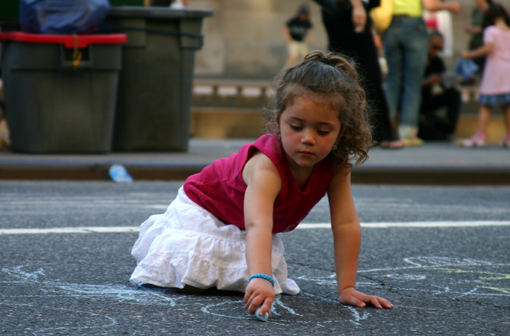Why Only One Museum Mile?
Some images and reflections from last night’s Museum Mile Festival:

What if New York City’s streets were designed to support its cultural insitutions as destinations. What if New York City’s streets allowed the life and creativity inside these cultural institutions to spill out onto engaging sidewalks, plazas, and streets?

In a big, crowded city, space is one of the most limited and valuable commodities there is. The bulk of New York City’s public space is its streets. Many of us assume that street space must be dedicated exclusively to motor vehicles. What if we allowed this valuable public space to be used for other activities?

What if city streets were places where children felt safe enough to sit and play? What is more valuable to the city, curbside parking or curbside creativity?

Is New York City a healthier, more competitive city when it allows its streets to be clogged and immobilized by traffic or when its streets support social and cultural activities that help build community?

One easy way to learn the answers to these questions would be to expand events like Museum Mile to other parts of the city and to more days of the year.
